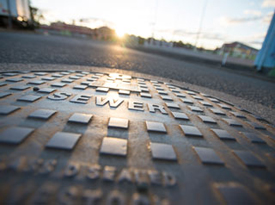Weekly column from Council Courier e-newsletter by CEO Greg Hallam on Friday, 14 October 2016.
This has been a big news week for local government and I wish I could say it was good. It did, however, contain a lot of lessons for councils as well as the state and federal governments.
First up the now departed Auditor-General of Queensland Andrew Grieve tabled in State Parliament his report on Forecasting Long-term Sustainability of Local Government (not to be confused with his annual report on council financial statements).

It certainly drew attention from media outlets around the state. The timing was exquisite - so close to our annual gathering next week, a fact that did not go unnoticed.
The report itself and its recommendations stand on their own and are largely fine, albeit they are responding to a snapshot in time. In a number of instances, the report ignores in its commentary the extraordinary disaster-related spending which has significantly altered some individual council financial ratios. Bundaberg certainly comes to mind. There’s also a little electoral history to keep in mind and I’ll return to that.
The media statements attributed to the Queensland Audit Office are more of a concern. It is dead wrong to say our elected members and senior council staff do not understand the financial challenges facing councils. They do. Have a look at the annual conference resolutions year after year, or the program at the annual LGAQ finance and civic leaders’ summits.
They might not know down to the last dollar how crook things are, or quickly give you a precise financial coefficient, but they sure know things aren't grand in Kansas City. They grapple weekly with how to balance the community’s capacity to pay with the task at hand.
They also know that over the last five or six years previous state governments have significantly cut funding or imposed legislative measures restricting councils’ revenue raising ability. The maximum infrastructure charges regime and dividends of the SEQ Water Retailers are two cases in point. Couple this with the Federal Government’s three-year freeze on indexation of financial assistance grants payments and, in aggregate, council revenues have copped an annual hit of $1 billion plus.
In fairness the last federal and state budgets have seen around $400 million of that returned largely in road funding. But it's still a big hole.

It's also cute to suggest councils should do better at forecasting long term revenues, especially the smaller ones. I would be really pleased if the Auditor-General went down to the Tower of Power and asked our state political leaders to sign a blood guarantee about the precise amount of money councils were going to receive over the next 10 years. In truth, the amount gyrates all over the place from year to year as I indicated above.
I'm always drawn to the fact that, when it comes to the national tax pie, Canberra takes 83%, the states, 14% and councils, 3%.
Therein lies the fundamental difficulty - vertical fiscal imbalance. Many rural, remote and indigenous communities could not get within a country mile of funding their infrastructure through own source revenue. That situation is made much worse by the abolition of water and sewerage capital grants, where the impact on communities via higher service charges would be catastrophic. I’m talking about thousands of dollars extra per ratepayer per year.
Let’s be honest: ratepayers in very small communities never paid for the capital in the first place. The state did. Now it is councils being castigated for not provisioning for their replacement.
Councils have an economic or a federal financial relations crisis not an accounting problem. Many independent reports attest to that fact.
A third of Queensland councils are effectively being asked to fund infrastructure and services that are well beyond them.
When local government started in Queensland 157 years ago, life was simple in the bush. Roads were unpaved, water and sewerage were rudimentary and sporting fields were made out of a back paddock somewhere.
Regulations and standards were few and community expectations extremely modest. Councils could largely pay for most of those services through locally raised rates. We are a world away from that situation now.

Finally on this matter, some parties have forgotten the electoral lessons of the 2008-12 term.
Over that term, those of our civic leaders with a real sense of purpose and determination to fix many of the issues that so concerned the Auditor-General rose rates by up to 27% and service charges by 30%.
For their troubles they were put to the electoral sword at the March 2012 elections, producing the biggest turnover of elected members since World War 2. And let’s not forget the number of CEOs being dispatched all around the state. The accounting issue does not exist in isolation.
So having barely recovered from the Queensland Audit Office report, we stumbled into Wednesday, when Advocacy Manager Greg Hoffman and our industrial relations team represented the LGAQ at the Parliament’s Finance and Administrative Committee hearing on the state’s new IR legislation.
They argued the loss of the single local government award would cost around 1000 jobs and add around $27 million in costs. These figures were derived from the ongoing and comprehensive industrial audits the Association conducted over the past year.
The injustice and incongruity was writ large for me. One day the Auditor-General was giving us a touch up - mostly justified but not entirely contextual - and the very next day the State Government was doing its level best to make the situation worse by loading us with more labour cost and administrative red tape. Go figure.
See you at next week’s Annual Conference. After this week I will be the one in the straightjacket.